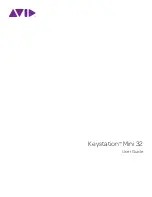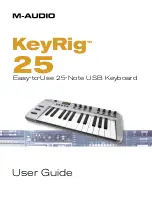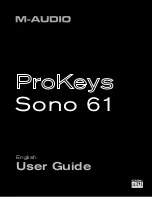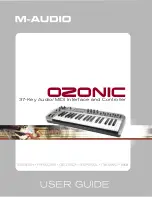
9. History: The story behind the Electro 2 instruments
NORD ELECTRO 2 V2.0x
Page 50
Hammond filed a patent for the tone wheel organ in 1934, and one
year later he introduced the first Hammond organ, the Model A. In
the patent, Hammond catalogues the numerous objects that contrib-
ute to the complete design. He lists 29 different features. Among
them you can find, for example, feature number 17, which states: "To
provide an instrument of the type which is relatively light in weight
and is portable." Wonder what roadies around the world have to say
about that!
This patent is the backbone of the whole organ line made by Ham-
mond until 1974. The Model A was very expensive at the time, yet
the sales were impressive. The company grew steadily and, over time,
new models were released. Laurens Hammond was correct from the
start to have focused his market for the instrument on churches. He
saw a great potential there in sales, and many organ models had cabi-
nets designed to fit the various religious services. Despite all-new
models, they had more or less the same tone-wheel concept, but with
different styles of cabinets, pedal board, speaker configuration, and
amplification. Hammond and his team continued to experiment with
different ways to deepen the sound, adding effects such as tremolo and
chorus.
In 1954, Hammond introduced the B-3 model to the market. It became the best seller of all Hammond
organs. One of the secrets to the B-3's success was its sound, thanks to the integration of the newly de-
veloped chorus and tremolo features, as well as the introduction of the Percussion feature and reverbera-
tion. All this combined made musicians do a vast amount of new and exciting sounds to play with at the
time. The B-3 is still a very popular instrument and still in use around the world.
The first page of the patent for the
tone wheel organ filed by Laurens
Hammond in 1934.
Here you can see the knob for selecting the A-100 organ's Vibrato and
Chorus effects. There are six different positions. All of these effects are
simulated in the Nord Electro 2. The rocker tabs control the Vibrato/
Chorus on/off status for the upper (Swell) and lower (Great) manuals.
The tab far to the left is a overall volume switch for the whole organ. This
particular function is not exactly implemented in the Nord Electro 2. In-
stead, there's a Master level knob.
On the right-hand side of the A-100, there are the Percussion tabs. These
are all simulated in the Nord Electro 2. The Percussion feature is a single-
trigger/non-legato effect. Enabling the Percussion on/off switch disarms
the 1' drawbar on the A-100. In the Electro 2, the 1' tone will still be
available if desired. The idea with this effect was to add an attack tran-
sient to the tone of the organ. There was the choice to add an octave
above the fundamental (8') -- named the "second" harmonic -- or the octave and a fifth above -- named the "third" har-
monic. The Slow/Fast tab defines the release envelope of the percussion effect. This is a great feature that was released in
1954, letting the player give an extra little edge to the solo parts he or she is playing.
















































